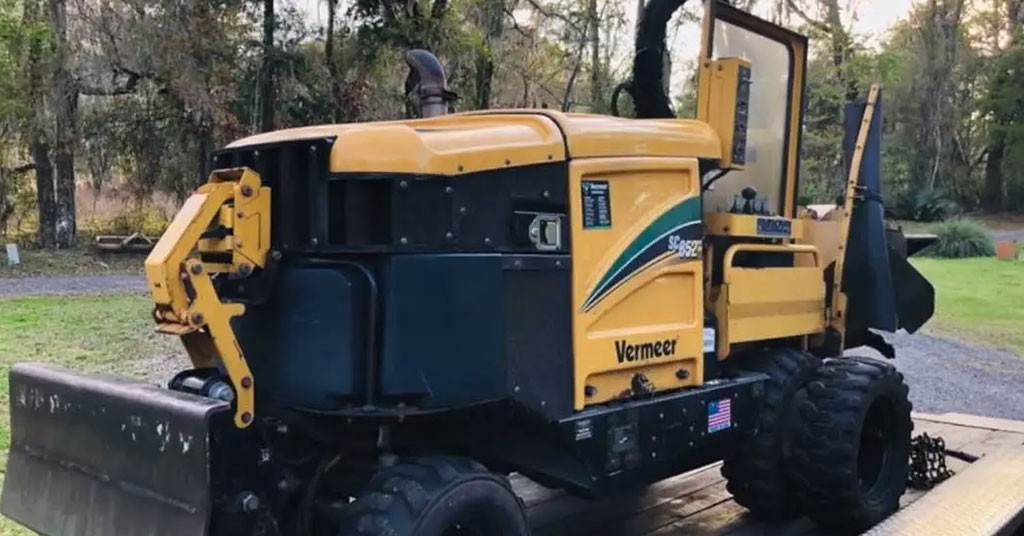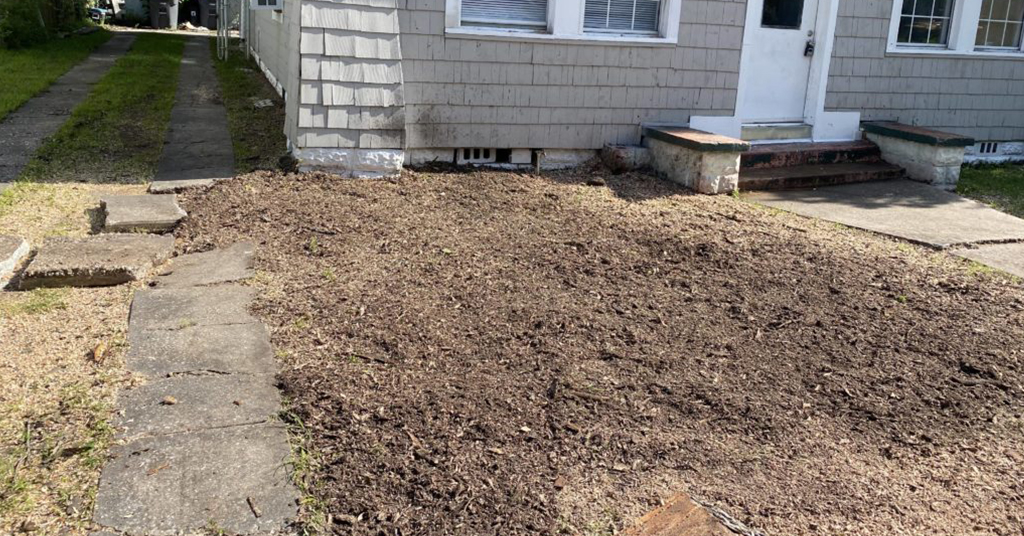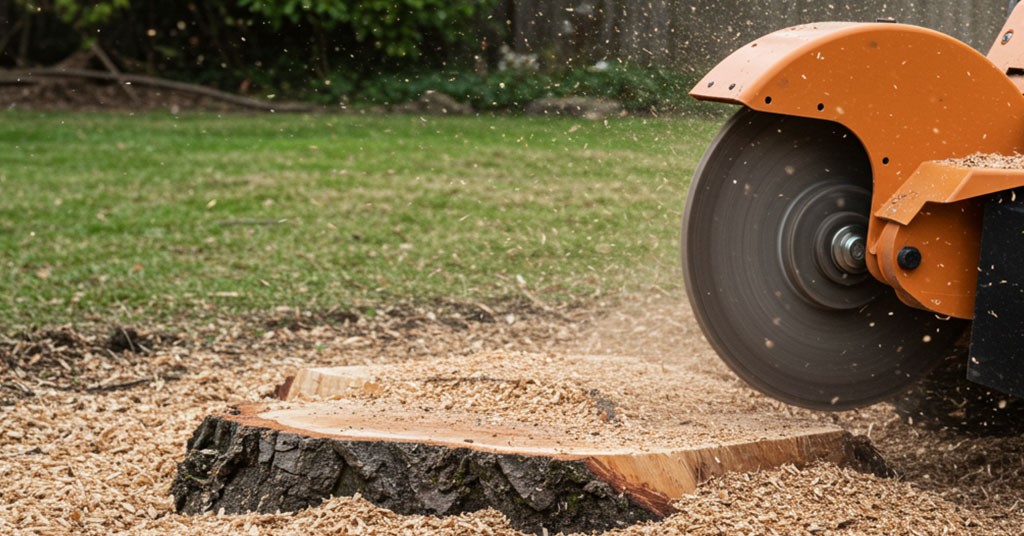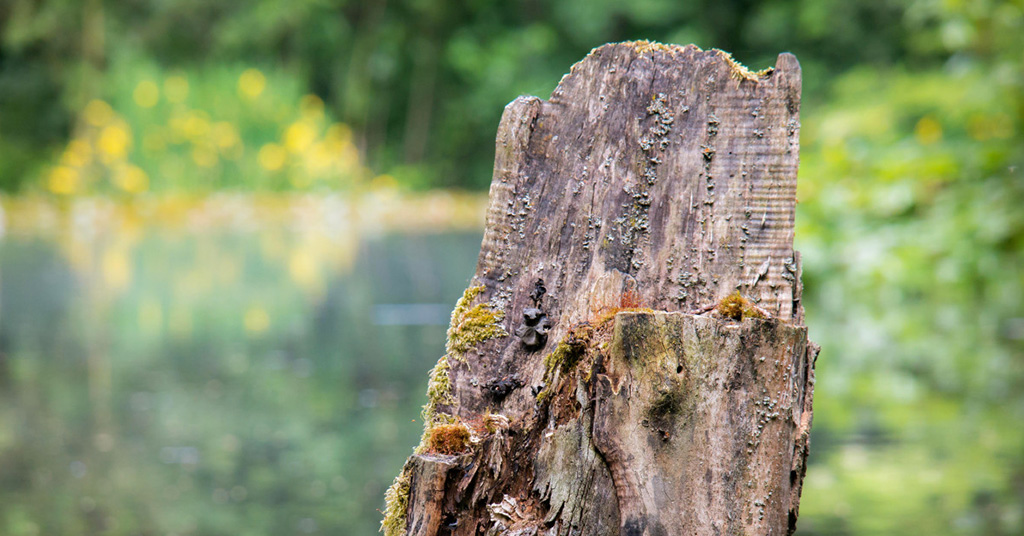

- 05 Jul, 2024
- Stump Removal
Stump removal entails uprooting tree stumps from the ground using a machine named stump grinder.
Stump originating from ground-up stump materials are disciplining for your ground to avoid the conclusion of revolting dips or voids in your yard. Ensure that your ears, hands, and face are protected during loud exercises like the operation of heavy machinery.
Importance of Stump Removal
It is essential to have a tree stump removed because of the dangers and unhealthy conditions that it poses to your surrounding environment and the appearance of your compound.
Besides, they can be a source of tripping points, particularly where children or the elderly use infrastructures. To prolong the life expectancy and enhance the sound health of your outdoors, it is wise if stump removal remains your top interest.
Advantages of stumping
It is a cut or stumped wooden trunk that is left behind after getting chopped or felled. This procedure includes a concise stem part of the trunk and the root, which remain in the ground.
Thus, cutting down the stump eliminates the chances of pests, diseases, or even accidents that the stump can cause. It also enables you to employ the space for other uses, for instance, planting new trees or creating a garden space.
The following are the major benefits of removing a stump.
- Enhances the vegetation outlook by eradicating the eyesores such as stumps.
- Thus, it provides a possibility to use the territory for other purposes, for instance, as an area for gardens, playgrounds, or sheds.
- Decreases risks as it works to abolish protruding stumps that may lead to tripping.
- Retards root penetration into the ground hence protects the structures in the ground.
- Permits one to plant more trees, shrubs, and flowers in the same compound area without hindrance.
- It enhances the value of a property since a yard free of tree stumps not only enhances the beauty of the living area.
- Eliminates pest habitants by eradicating a surrounding that is ideal for habitation by rodents.
- ??They've made mowing easier by removing these forms of barriers and hence are in a better position to meet the customers' needs.
Different Methods to remove Tree Stump
By using chemicals
Chemical removal can be applied by those who want to avoid using one of the mechanical ways of removing stumps. Chemical removal involves the use of chemicals that will help to boost the process of decomposition of the stump.
Stump-removing chemicals dissolve the wood fibers when applied to stumps, meaning that decomposition is sped up. The stump may remain fresh for some time or even decompose with time; this may take several weeks or months. Some of these drugs must be taken according to the given guidelines of the specific product's manufacturer.
- Do not contact children and animals When using chemicals for stump removal.
- To attempt to remove the tree stump using chemicals, saw it to the ground level using a bow saw. Never allow the teeth of the bow saw to stroke the ground, as that leads to dulling of the teeth.
- To increase the absorption, you should use a power drill to create several holes a couple of inches deep into the wood stump.
- Inoculate stump holes with chemicals. Incorporating the safety measures of your chosen stump killer, adhere to the guidelines given in the instructions related to the product's use. This will disintegrate the stump and make it easier to handle since it will be reduced to a soft substance.
- When the stump remains immobile, it will turn soft, and one must only use an axe to split it.
High-Pressure Water Blasting
Hydro excavation, pressurized water blasting, is another form of stump removal that deals with breaking and removing stumps using water pressure. This type is perfect for locating and cutting relatively small stumps without extended root systems. The process involves altering the water pressure, aiming the flow toward the stump's base, and then dismantling it.
Proper measures have to be taken for safety and equipment maintenance and usage. High-pressure water blasting is a procedure that is efficient and non-harmful to the environment. However, it cannot work efficiently with large stumps with several branches, roots, and sub-roots.
Hydraulic removal
Hydraulic removal is the use of hire pressure and force in the elimination of the stump by employing a hydraulic jack or a stump extractor. The stump is positioned below the hydraulic jack. So, when pressure is applied to the jack, the stump is lifted off the ground. This method is particularly helpful when the stump is massive or widely spread with its roots, and other methods prove to be unhelpful.
Combination Techniques
However, in some cases, different methods can be used to reduce the presence of stumps effectively. For instance, a stump could have been partly removed by an excavator and the remaining piece, further processed by a stump grinder. Recommended solutions can be applied in synergy which can lead to better outcomes counteracting specific issues.
Manually
Excavation of tree stumps require time and effort as you have to dig, cut, and take out the stump using your bare hands and tools. Start hacking with the help of an axe or shovel around the stump, clearing the soil, and disclosing all the external and lower roots. One may have to wash the soil off with a hose to expose each root if they are hidden by the soil.
If the roots are small enough or visible, perhaps they can be cut with a hatchet, bow saw or loppers; but always be careful not to cut through rocks. You need to keep digging around the stump’s core until you get to the large and main taproot.
Remove all unnecessary dirt off the trunk and check whether there are obstructions before you chop through the taproot with a precise knock with an axe or saw. Maintain control while cutting.
It should be noted that small stumps can be got rid of using hands and extreme violence in some cases. Under this procedure, the ground around the stump is excavated; the roots are cut and finally, the stump is pulled out using digging bars, axes, and chains. Manual removal is effective for small stumps, or where there is restricted access for the heavy machines which again is time consuming and may require more human energy as compared to chemical and grinder methods.
Last but not the least, when the taproot and stabilizing roots are gone, seek help in fastening ropes and pulling out the stump with the help of these ropes in the manner that it comes out from the pit in a straight position. Some roots always stay in the ground, which is the case if the stump is really voluminous; however the greater part of it will turn into the compost.
Tree stump poisoning
The other common method of removing stumps is through poisoning these stumps through the ground or in other words, injection of chemicals into the stumps. This one involves using a herbicide or stump killer to the freshly cut surface of the stump. The chemical gets into the stump, and restricts it from growing and being alive. The stump finally decays, and that is it. Other application of stump poisoning is normally done together with other removal techniques in order to hasten the process.
Winch to take out stumps
If there is access to a stump as well as an appropriate point to tie off on it is possible that the winch can take the stump out. First of all a winch is connected to the stump and secondly fastens for the other end to a strong object for example a tree or a car. Since it’s a powerful machine it exerts pull and force to lift the stump out of the ground. For small stumps, this approach is efficient but in order to have a stable stump removal then a good anchoring is needed.
Epsom salt
Perform auger holes on the tree stump and pour Epson salt to make it disintegrate. This organic method is suitable for removing and controlling tree stumps that have small and Harper root systems owing to the acceleration of the decomposition process and bringing into use of the residues as a fertilizer. The method of using Epsom salt to remove tree stumps is organic unlike some chemical processes which can be poisonous; this process shows how the remain of the tree can be put to productive use.
- Proceed to drill 1/2-inch wide holes that extend 6-inches deep on top of the stump and around the sides, especially for the larger stump.
- Pour the Epsom salt into the holes until the funnel will not go any further and force the Epsom salt down as tightly packed as possible. The stump should next be washed with water, but care should be taken not to pour water on the salt-soaked holes. Once Epsom salt gets deposited in the compounds of the wood, it dissolves.
- Put a waterproof sheet over the stump to ensure that it does not lose light or moisture during the bleaching process.
- From 2 to 3 months, the Epsom salt affects the lignin and cellulose in the wood, which makes the stump turn rotten and weak and thus easier to pull. Do not wash the salt with water to delay the progressive dissolution effect on the stump as much as possible.
- For a period of two to three months, the stump will become more tender thereby can easily be removed through digging.
- ??Last of all, pour topsoil into the hole.
Hire Professional Stump Grinding Experts
If you would like the best services of stump removal, then you should find services of professional stump removal. Companies that employ equipment and trained personnel to get rid of stumps quick and effectively. They are knowledgeable and skilled in the best practice of eradicating the stumps and will advise on the most appropriate process given your situation.
Natural Decay
At times, waiting for the stump to rot naturally is entirely possible and can also be considered as a viable method. It is an act of leaving the stump in the body and allowing it to dematerialize on its own.
It may take several years for insects as well as other critters to inhabit the stump or fully decompose.
Fire
That is why the removal of a fire-damaged stump is sometimes a rather dangerous affair, so be careful.
- It is important to consult local ordinances since burning is sometimes limited in urban or suburban areas.
- Drill 8-10-inch holes into the top and sides of the stump if the client allows it and is safe to do so.
- Pour the kerosene or fuel into the holes.
- Now, let it rest for at least an hour.
- Soak the substance more and pour more fluid and holding a long stick burn the stump from a safe distance.
- Stand a minimum of two meters away from the flammable material to be burning while observing the burning process.
- Stand in a position where you are ready to put out a fire in case of an unplanned spread of the fire. Reducing the stump to charcoal could take as long as 24 hours of relighting.
- Possess the food safely after burning the leftovers, but don’t use gasoline or motor oil again since they are dangerous.
In case you decide to use fire, be very cautious and abide by the Laws of your Nation before burning the stumps of trees. It is advised to cover the area to avoid the light from people or animals stepping on the embers since the fire in the stump can burn for a long time.
Stump Burning
Stump Burning involves heating the stumps until they catch fire and burn. This has the consequence of implying constant monitoring and respect for the existing fire laws of the area. Stump Burning involves boring of holes in the stump while inserting the flammable materials into the holes before putting the stump into the flames. The fire slowly burns the stump and its roots. When it burns, it turns into ashes at the end of the scene. Again, stump burning should be done under controlled situations with adequate measures of safety.
Tree Canopy Lifting
On limited occasions when the stump has to be removed, this can only be accomplished through pulling the tree canopy, the roots included. This strategy suits tiny trees that require lesser soil heath to support them depending on the extent of their roots.
It is only after the roots are clearly visible that the canopy of the trees can be pulled up with crowd effort, and possible mechanical equipment, like wires or pulleys.
Chainsaw
Chopping the tree stump with the help of a chainsaw is quite dangerous but still rather efficient.
- Begin by digging around the stump and saw it as close as possible. Beware; this procedure may damage or destroy the chainsaw chain to a degree that the stump is not gotten rid of as desired.
- With the help of a shovel, clear the soil around the stump and minimize the amount of soil on the top as much as possible.
- The stump should be cut into small pieces across the other with the chainsaw in a manner that should leave it 5 inches above the ground level.
- Last but not least, completely bury the hole with soil and bring back the top greenery there.
It should be noted that this method of using a chainsaw will blunt the chain and if it comes into contact with rocks will inadvertently fracture. This technique is efficient in stump removal; however, you should be careful in the process to ensure that your equipment does not suffer.
When do tree stumps biodegrade?
When trees are cut down, some tree stumps emerge into shoots to reconstruct themselves and may become a real tree after some time instead of decomposing. Stump from an older and bigger tree can approximately take over 20 years or more to turn to wood and decompose organically. On the other hand, ants, bugs, illnesses, fungi, mushrooms, or moss start appearing on the stump, thus promoting decomposition. Nonetheless, a stump that disintegrates naturally does so at a slow rate and, when exposed, can be an eyesore and a safety threat.
Conclusion
Both the cutting to ground level and the pulling out of stumps have their strengths and weaknesses; therefore, the best technique will depend on the size of the stump, where it is located, its accessibility, and the person's preferences. Before you commence your stump removal project, it is important to evaluate your project needs and seek help and advice from certified and experienced arborists.
Thus, effective means of removing stumps contribute to achieving a safe, aesthetically pleasing, functional outdoor environment. All kinds of tree removals, like stump grinding, excavation, or chemical removal, should be planned and implemented with the assistance of professional Stump Grinding Jacksonville FL experts to achieve the maximum results. Promote an appealing, efficient, and eco-sustainable landscape by focusing on stump removal and other services involving trees, such as tree canopy lifting, pruning, mulching, etc.
Related Blog
- 01 Sep 2024
- 0 Comment
What are other methods of stump removal?
Stump removal entails uprooting tree stumps from the ground using a machine named stump grinder. Stump originating from ground-up stump materials are disciplining for your ground to avoid the conclusion of revolting dips or voids in your yard. Ensure that...
- 01 Oct 2024
- 0 Comment
10 Benefits of Stump Grinding
A specialized device, a stump grinder, removes tree stumps from the ground during the stump removal procedure. By reducing the stump to tiny wood bits, this equipment removes it from the landscape permanently. To ensure that the entire tree is...
- 15 May 2024
- 0 Comment
How Natural Stump Decay Can Be A Challenge For Homeowners
The huge oak or the mighty maple that used to be on your property may have vanished, but its legacy still exists â in the form of a persistent stump. Although allowing nature to do its work and letting the...


